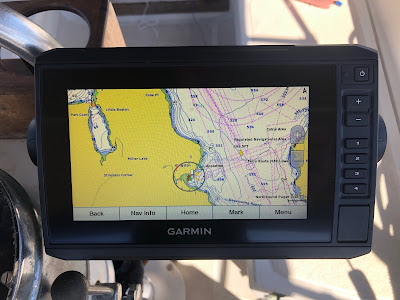The San Juan Preservation Trust has permanently protected more than 19,000 acres of land throughout the San Juan Islands. They are not always easily accessible by boat but many are worth the effort when you need to stretch your legs.
As sailors, we are blessed with an abundance of choices and destinations. But for the last 20+ years we straight-lined into Canada with Barkley Sound, Desolation Sound or the Gulf Islands as our main attractions. There was a sense of been there, done that, locally. Having spent a lot of time scuba diving the San Juans in my teens and twenties, and yearly visits in the family boats in my childhood, a certain level of familiarity had set in.
But the pandemic and the resulting closure of the Canadian border this year and last, had us searching for new anchorages and new adventures in our local waters. There are so many classic anchorages in the San Juan Islands that it is easy to visit the same places over and over. Some of our favorite places conjure such strong memories for us that they never get old. But we like to search out new experiances on every visit, and with the abundance of land that has been preserved for generations, it's not hard to find new favorites.
Many times it will be a suggestion from a fellow boater that awakens us to a new-to-us anchorage. Other times it's simply a new chart with a anchor icon that spurs our interest. Lately, we pour over the San Juan Preservation Trust website to find new hiking trails, and surrounding bays and forects. Most of this land is acquired by local landowners and is not open to the public. However, there are quite a few gems that are open to the public.
Here are two of our favorites:
Watmouth Bay Preserve, Lopez Island. We tend to tuck into Watmough as our first stop after the 7-8 hrour cruise up from our slip in Kingston. Nothing beats the quiet and the majesty of anchoring next to the cliffs and watching the osprey and kingfishers feed their young. Our 'quick' stopover sometimes last 2-3 days. Anchoring is good, but often times comes up with a load of kelp. The 470ft vertical hike up to the top of Chadwick Hill helps to shake off the hours spent at the wheel and can be spectacular on a clear day. There are many options when it comes time to stretch your legs. See the map for more detail.


Graham Preserve, Shaw Island. We have hiked this trail from both Indian Cove on the south and from Blind Bay on the north. It's an easy 1.2 Mile hike and can be accessed by kayak, paddleboard or dinghy from either side. From Blind Bay, use the dinghy dock at the ferry landing. This will add a few more miles to your hike, but you can power up with an ice cream cone or coffee as a bonus. The trail starts next to the community center, which is one of the only places that take recycling in the islands! There is a book exchange at the community center area as well. Check the map for more detail.


Kimball Preserve, Decatur Island. This is a nice spot to anchor on the north of the preserve between Center Island with good crabbing. There are no public docks or landing facilities on the island so a quick row to the tombolo on the north shore or land on the south side of the isthmus that connects the tombolo to the headlands. The beach is low bank and easily accessible from Lopez Pass. The trail around the tombolo, on the west side of the Preserve, leads from the beach and circles the island on the west end. There is also a trail that accesses the headlands on the east side of the Preserve. The eastern Preserve boundary abuts privately-owned land which is protected by a conservation easement with SJPT. The public trail ends here. See the map for more detail.




















